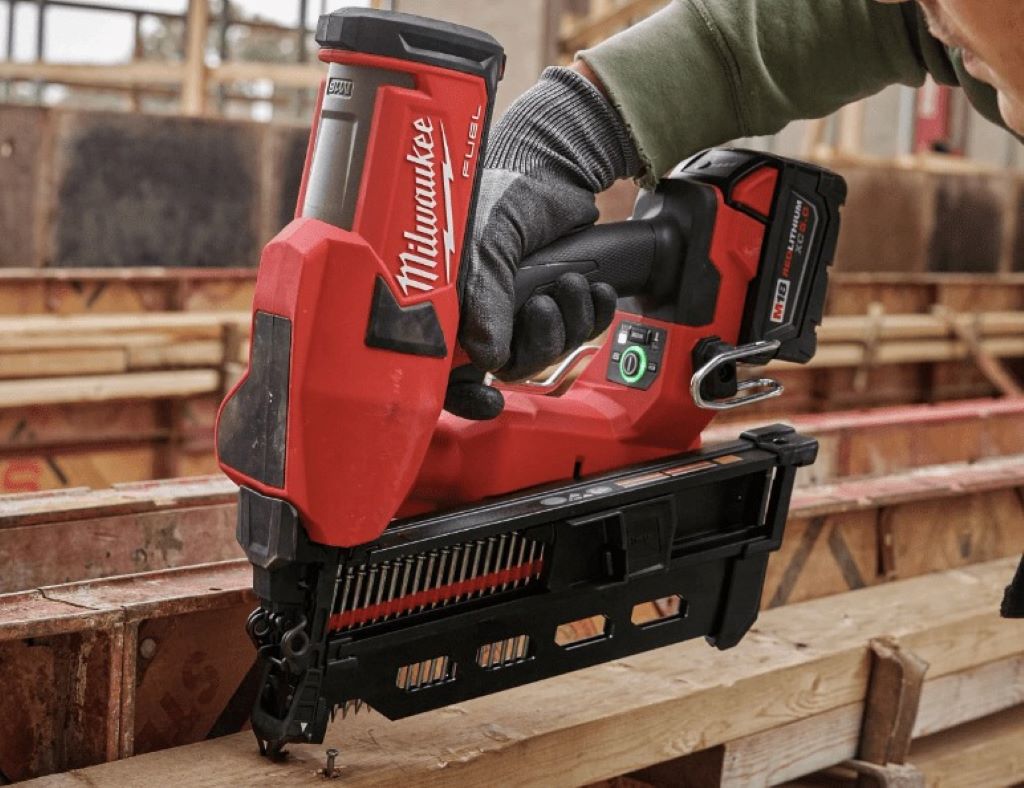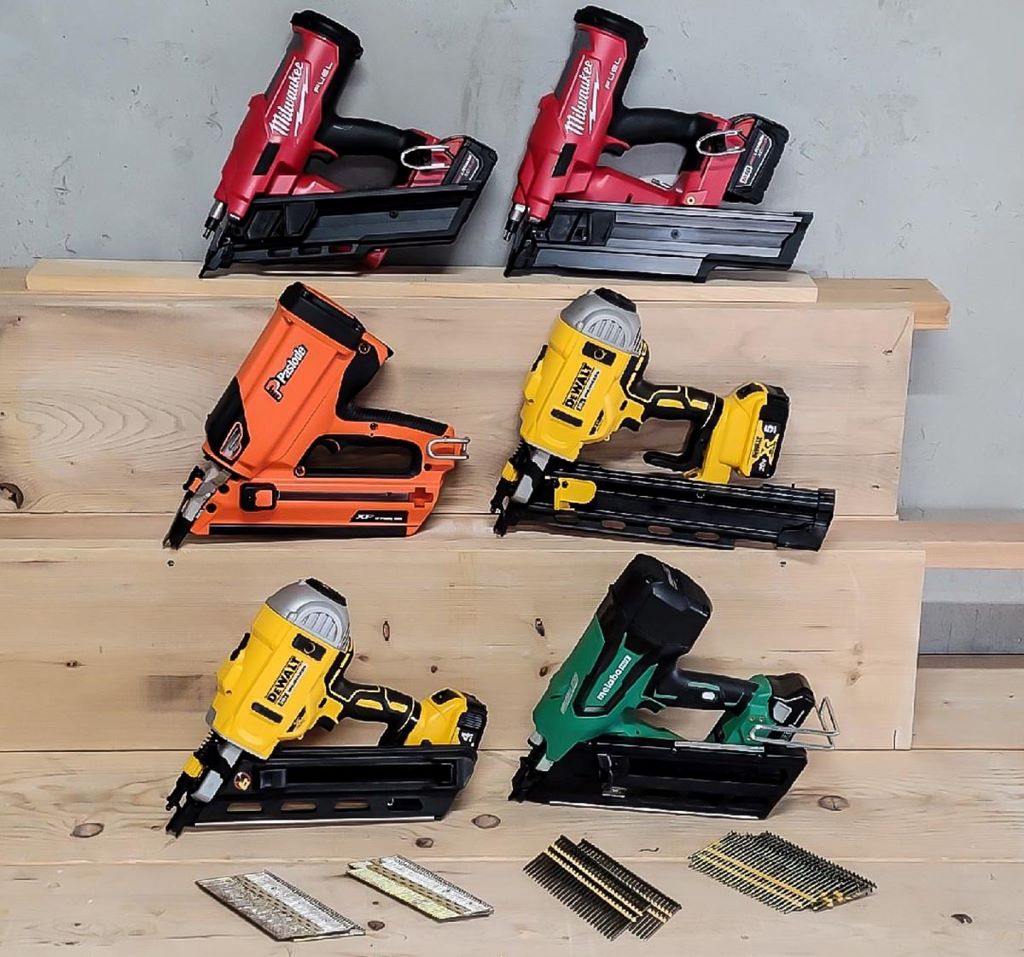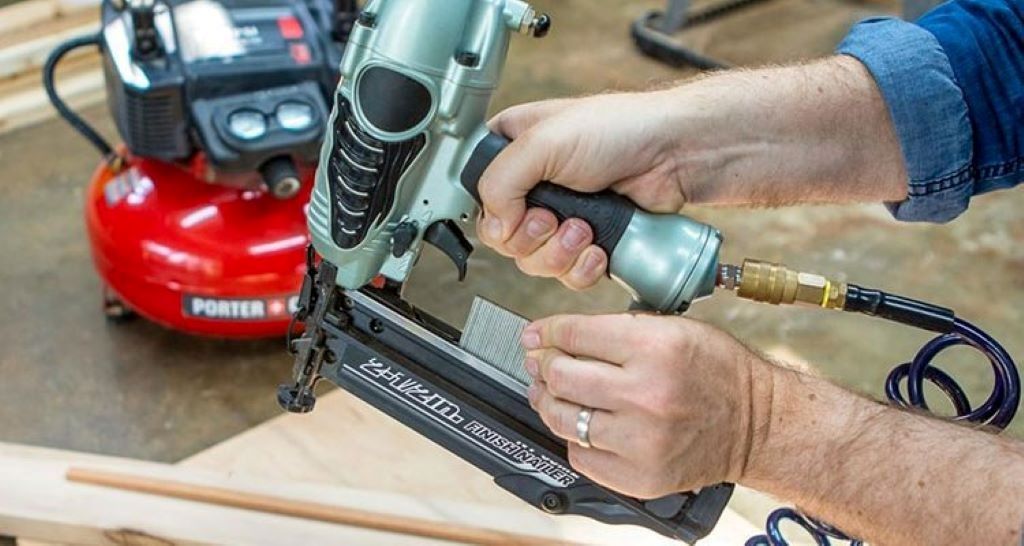Imagine tackling a plywood sheathing project with a tool that makes every nail drive smooth, precise, and effortless. Whether you’re reinforcing walls, building a roof, or constructing a sturdy subfloor, the right nail gun can transform a daunting task into a satisfying job well done. But with so many options on the market, how do you choose the best nail gun for plywood sheathing? In this comprehensive guide, we’ll dive into the top nail guns for 2025, key features to consider, and expert tips to ensure your sheathing projects are secure and efficient. Let’s nail it!
Why Choosing the Right Nail Gun Matters for Plywood Sheathing
Plywood sheathing is a critical step in construction, providing structural integrity to walls, roofs, and floors. Unlike lighter woodworking tasks, sheathing demands a heavy-duty tool capable of driving nails through dense plywood and into framing members without splitting the wood or compromising hold. A poorly chosen nailer can lead to overdriven nails, damaged plywood, or weak attachments that fail building codes. The right nail gun ensures precision, speed, and durability, saving you time and frustration.
Key Features to Look for in a Nail Gun for Plywood Sheathing
Before we reveal our top picks, let’s break down the essential features to prioritize when selecting a nail gun for plywood sheathing:
- Nail Type and Size: Sheathing typically requires 8d or 10d common nails (2.5–3 inches long) or ring-shank nails for enhanced grip. Ensure the nailer supports full round head or clipped head nails, as required by local building codes.
- Power Source: Pneumatic nailers offer consistent power but require an air compressor. Cordless battery-powered models provide mobility, ideal for remote sites, while electric nailers are less common for heavy-duty tasks.
- Depth Adjustment: Tool-free depth settings prevent overdriving nails, which can weaken plywood by breaking its layers, especially in seismic zones.
- Firing Mode: Sequential firing offers precision for controlled nailing, while bump firing speeds up large projects. Some nailers allow switching between modes for versatility.
- Magazine Capacity: A larger magazine (e.g., 60–400 nails) reduces reload frequency, boosting efficiency. Coil nailers hold more nails than strip nailers but may be bulkier.
- Ergonomics and Weight: Lightweight designs with rubberized grips and balanced weight distribution reduce fatigue during long workdays.
- Safety Features: Look for anti-dry fire mechanisms, no-mar tips to protect plywood surfaces, and trigger locks to prevent accidental firing.
Top 5 Nail Guns for Plywood Sheathing in 2025
After researching user reviews, expert opinions, and technical specifications, we’ve curated a list of the best nail guns for plywood sheathing. These models excel in power, reliability, and user comfort, making them ideal for both professionals and DIYers.
-
DeWalt DCN692M1 Cordless Framing Nailer
- Best Overall
- Key Specs: 20V battery, 2–3.5-inch nails, 21-degree plastic collated, 400 nails per charge, 8.1 lbs.
- Why It Stands Out: The DeWalt DCN692M1 combines cordless convenience with robust performance. Its brushless motor drives nails with precision, while the selectable firing mode (sequential or bump) adapts to your workflow. The tool-free depth adjustment ensures flush nails without damaging plywood, and its jam-clearing mechanism minimizes downtime. With a 4.0 Ah lithium-ion battery, it’s perfect for remote sites.
- Pros: Long battery life, ergonomic grip, dual-speed mode for soft or hard materials.
- Cons: Slightly heavier than pneumatic models, higher upfront cost.
- Best For: Contractors needing mobility and versatility.
-
BOSTITCH F21PL Pneumatic Framing Nailer
- Best Budget-Friendly
- Key Specs: Pneumatic, 1.5–3.5-inch nails, 21-degree plastic collated, 60-nail magazine, 8.1 lbs.
- Why It Stands Out: The BOSTITCH F21PL offers professional-grade power at an affordable price. Its magnesium body balances strength and lightness, while rubber skid pads enhance user comfort. The adjustable depth control ensures precise nail placement, making it ideal for ½-inch or 5/8-inch plywood sheathing.
- Pros: Lightweight, durable, cost-effective, secure grip.
- Cons: Requires an air compressor, smaller magazine capacity.
- Best For: Budget-conscious carpenters tackling sheathing and framing.
-
Metabo HPT NR83A5 Pneumatic Framing Nailer
- Best for Heavy-Duty Projects
- Key Specs: Pneumatic, 2–3.25-inch nails, 21-degree plastic collated, 64-nail magazine, 8.8 lbs.
- Why It Stands Out: Known for reliability, the Metabo HPT NR83A5 delivers consistent power for driving nails into dense plywood and framing. Its open-nose design simplifies jam clearing, and the tool-free depth adjustment ensures compliance with shear wall requirements. The selective actuation switch toggles between sequential and bump firing.
- Pros: High durability, fast firing, easy maintenance.
- Cons: Slightly heavier, requires compressor.
- Best For: Large-scale construction projects.
-
Paslode Cordless XP Framing Nailer
- Best for Portability
- Key Specs: Gas-powered cordless, 2–3.25-inch nails, 30-degree paper collated, 9,000 nails per fuel cell, 7.2 lbs.
- Why It Stands Out: The Paslode XP is a favorite for its lightweight design and cordless operation, eliminating the need for hoses or compressors. It fires up to 12 nails per second with minimal recoil, ideal for sheathing tasks. The 84-nail magazine and low-maintenance design keep projects moving.
- Pros: Ultra-portable, low recoil, high firing speed.
- Cons: Fuel cells add ongoing costs, paper collated nails may jam in humid conditions.
- Best For: DIYers and contractors working in tight spaces.
-
Freeman PCN65 Pneumatic Coil Nailer
- Best for High-Volume Sheathing
- Key Specs: Pneumatic, 1.25–2.5-inch nails, 15-degree coil, 400-nail magazine, 5.7 lbs.
- Why It Stands Out: The Freeman PCN65 is a lightweight coil nailer designed for high-volume sheathing. Its magnesium construction and 400-nail magazine reduce reloads, while the precision depth adjustment customizes nail depth for various plywood thicknesses. The bump firing trigger ensures rapid, accurate nailing.
- Pros: Large magazine, lightweight, affordable.
- Cons: Limited to shorter nails, coil nails may be harder to source.
- Best For: Professionals needing speed and efficiency.

How to Choose the Best Nail Gun for Your Plywood Sheathing Project
Selecting the perfect nail gun depends on your project’s scope, budget, and work environment. Here are practical tips to guide your decision:
- Assess Project Size: For large-scale construction, prioritize pneumatic nailers like the Metabo HPT or Freeman for power and speed. Smaller DIY projects benefit from cordless models like the Paslode or DeWalt.
- Consider Building Codes: Some regions, like seismic zones, prohibit clipped head nails or require specific nail lengths (e.g., 8d for ½-inch plywood). Check local regulations before buying.
- Evaluate Mobility Needs: If you’re working without power outlets, cordless nailers (DeWalt or Paslode) offer freedom. Pneumatic models require a compressor but deliver unmatched power.
- Match Nail Type to Plywood Thickness: Use 8d nails (2.5 inches) for ½-inch plywood or 10d nails for 5/8-inch plywood. Ring-shank nails provide superior holding power for exterior sheathing.
- Budget Wisely: Pneumatic nailers like the BOSTITCH are cost-effective upfront, while cordless models save on compressor costs but require battery or fuel cell replacements.
Tips for Using a Nail Gun on Plywood Sheathing
To maximize performance and safety, follow these expert tips:
- Test Depth Settings: Start with a scrap piece of plywood to adjust depth, ensuring nails are flush without breaking the surface.
- Maintain Proper Angle: Hold the nailer perpendicular to the plywood to avoid angled nails that weaken hold.
- Follow Nailing Schedules: Space nails per building codes (e.g., 6 inches on edges, 12 inches in the field) to ensure structural integrity.
- Use Safety Gear: Wear safety glasses, gloves, and ear protection to guard against misfires and noise.
- Prevent Jams: Regularly clean the nailer and use high-quality, compatible nails to avoid jams that slow progress.
FAQs About Nail Guns for Plywood Sheathing
Q: Can I use a finish nailer for plywood sheathing?
A: No, finish nailers (15–18 gauge) lack the power and nail size needed for sheathing. Framing nailers or coil nailers are better suited for driving 8d or 10d nails into plywood and framing.
Q: What’s the difference between pneumatic and cordless nailers?
A: Pneumatic nailers use compressed air for consistent power but require a compressor and hoses. Cordless nailers run on batteries or fuel cells, offering mobility but potentially less power and higher costs over time.
Q: Are staples suitable for plywood sheathing?
A: Staples (e.g., 16-gauge, 1.5–1.75 inches) are allowed in some regions but may not meet codes in high-wind or seismic areas. Check local regulations before using a stapler.
Conclusion: Nail Your Sheathing Project with Confidence
Choosing the best nail gun for plywood sheathing can make or break your construction project. Whether you opt for the versatile DeWalt DCN692M1, the budget-friendly BOSTITCH F21PL, or the high-capacity Freeman PCN65, each of our top picks delivers the power, precision, and durability needed for secure sheathing. By considering nail type, power source, and project demands, you’ll find a tool that streamlines your work and meets building standards.
Ready to elevate your next sheathing project? Share your favorite nail gun or ask a question in the comments below—we’d love to hear from you! For more tool reviews and woodworking tips, subscribe to our blog and never miss an update.
Read More:
Guide to Nail Gun Air Pressure
Troubleshooting Your Battery-Powered Nail Gun That Won’t Fire




